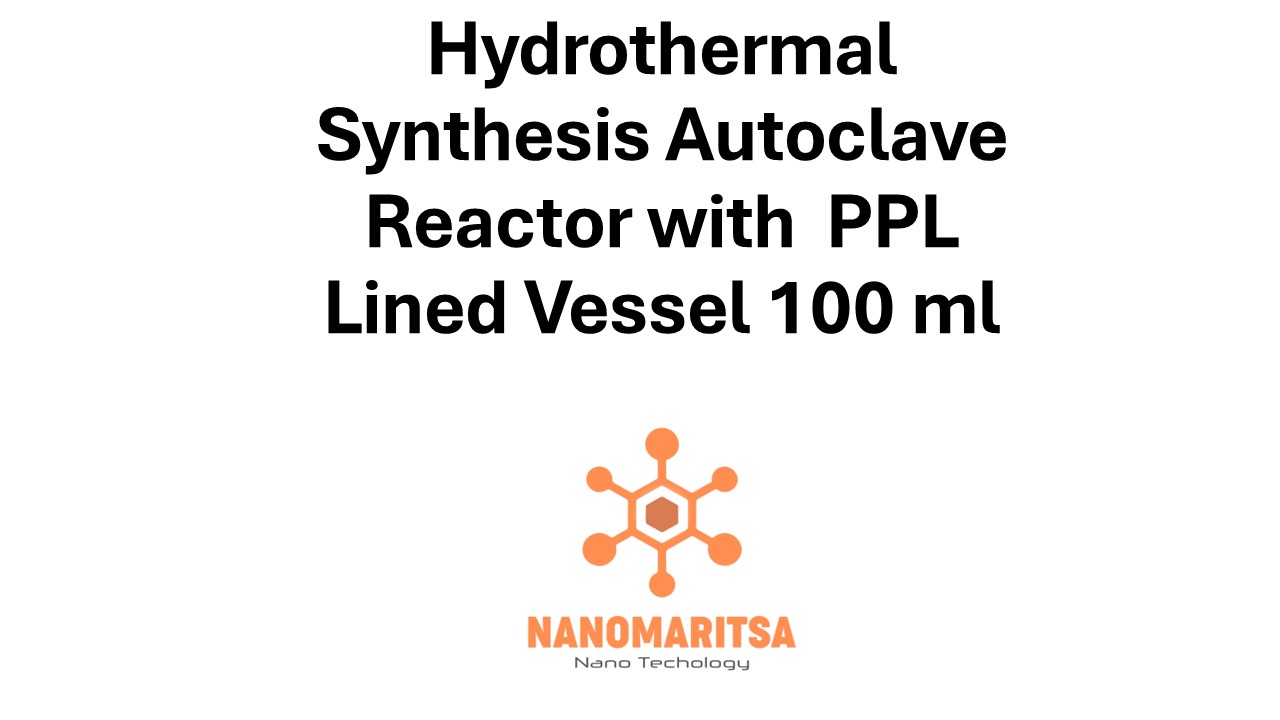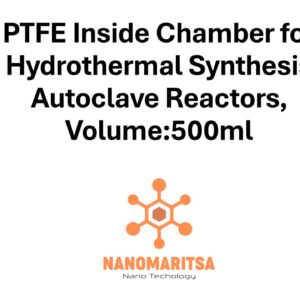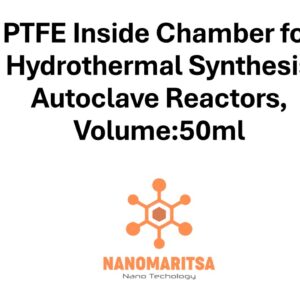Hydrothermal Synthesis Autoclave Reactor with PPL Lined Vessel 100 ml
€272.00
CompareHydrothermal Synthesis Autoclave Reactor with PPL Lined Vessel (100 ml) is a laboratory instrument used for carrying out hydrothermal synthesis reactions under high pressure and temperature conditions. This type of reactor is particularly used in the production of advanced materials, such as nanomaterials, crystalline structures, and other inorganic compounds. Here’s an overview of its key features, properties, applications, and handling considerations:
1. Key Features:
- PPL Lining: The reactor is equipped with a PPL (Polyphenylene Sulfide) lined vessel, a material known for its excellent resistance to a broad range of chemicals, including acids, bases, and solvents. This ensures that the PPL lining does not react with the chemicals in the synthesis process, providing a stable and inert reaction environment.
- Volume (100 ml): The reactor has a 100 milliliter (ml) vessel capacity, making it suitable for moderate-scale laboratory experiments. This volume is ideal for research and prototyping where slightly larger quantities of material need to be synthesized compared to smaller reactors.
- Pressure and Temperature Resistance: The reactor can withstand high temperatures (150°C to 250°C) and high pressures (200-300 bar), conditions necessary for hydrothermal reactions. These conditions allow for the synthesis of materials that require elevated temperature and pressure for their formation.
- Sealed Environment: The PPL-lined vessel is securely sealed within the autoclave reactor, maintaining precise control over the temperature, pressure, and chemical environment during the reaction. This ensures the optimal conditions for synthesis.
2. Properties:
- Chemical Resistance: The PPL material is highly resistant to various aggressive chemicals, preventing unwanted reactions with the chemicals inside the reactor. This ensures the purity of the synthesized materials.
- Thermal Stability: PPL offers excellent thermal stability, able to withstand temperatures as high as 250°C, making it suitable for high-temperature reactions typical in hydrothermal synthesis.
- Mechanical Strength: The PPL lining provides mechanical strength, which helps maintain the integrity of the reactor under high-pressure conditions, preventing leaks or failures during operation.
- Non-reactivity: PPL’s non-reactive nature ensures that there is no contamination from the lining itself, which is crucial when working with sensitive materials.
3. Applications:
- Nanomaterial Synthesis: This reactor is often used in the synthesis of nanoparticles, nanowires, and other nanomaterials that are critical in applications such as electronics, sensors, biomedical devices, and energy storage systems.
- Crystal Growth: Hydrothermal synthesis is an effective method for growing high-quality single or polycrystals, especially for metal oxides, semiconductors, and other inorganic compounds. The reactor ensures a controlled environment for crystal growth.
- Catalyst Synthesis: The reactor can be used to synthesize new catalytic materials or modify existing catalysts. The high pressure and temperature promote the creation of catalysts with enhanced reactivity or selectivity.
- Energy Materials: The reactor is suitable for synthesizing energy-related materials, such as electrodes for batteries, supercapacitors, and materials for fuel cells, which benefit from hydrothermal synthesis processes.
- Environmental Applications: The reactor can also be used to produce materials for environmental applications, such as catalysts for pollution control, water purification, and materials for sustainable energy technologies.
- Advanced Ceramics and Composites: The reactor is used in the production of advanced materials like ceramics and composites, which are critical in industries such as aerospace, electronics, and sensors.
4. Handling and Safety:
- Toxicity and Corrosiveness: Although PPL is resistant to most chemicals, the reagents used in hydrothermal synthesis may still be toxic or corrosive. Always ensure that the chemicals used are compatible with PPL and take appropriate precautions when handling hazardous materials.
- High Pressure and Temperature Safety: The reactor operates under extreme conditions, and safety protocols must be followed. Always ensure that the vessel is properly sealed and inspect it for any signs of damage before use. The reactor should be operated in a safe environment, with appropriate pressure and temperature controls in place.
- Storage: After use, the reactor and PPL-lined vessel should be thoroughly cleaned to remove any chemical residues. It should be stored in a cool, dry place to prevent degradation of the PPL lining. Avoid exposure to extreme temperatures or direct sunlight.
- Precautions: Always wear appropriate personal protective equipment (PPE), such as gloves, goggles, and lab coats, when working with the hydrothermal reactor. Ensure that the laboratory is well-ventilated or equipped with a fume hood when working with volatile or harmful chemicals.
Summary:
The Hydrothermal Synthesis Autoclave Reactor with PPL Lined Vessel (100 ml) is a versatile and essential tool for performing hydrothermal synthesis reactions at moderate scale in laboratory settings. Its PPL lining ensures chemical resistance, thermal stability, and mechanical strength under high-pressure and high-temperature conditions. The reactor is ideal for a variety of applications, including the synthesis of nanomaterials, crystal growth, catalyst development, energy materials, and environmental technologies. The 100 ml capacity is suitable for researchers who need to synthesize larger quantities of material while maintaining precise control over reaction conditions.
| Pieces | 1 Piece, 5 Pieces |
|---|






